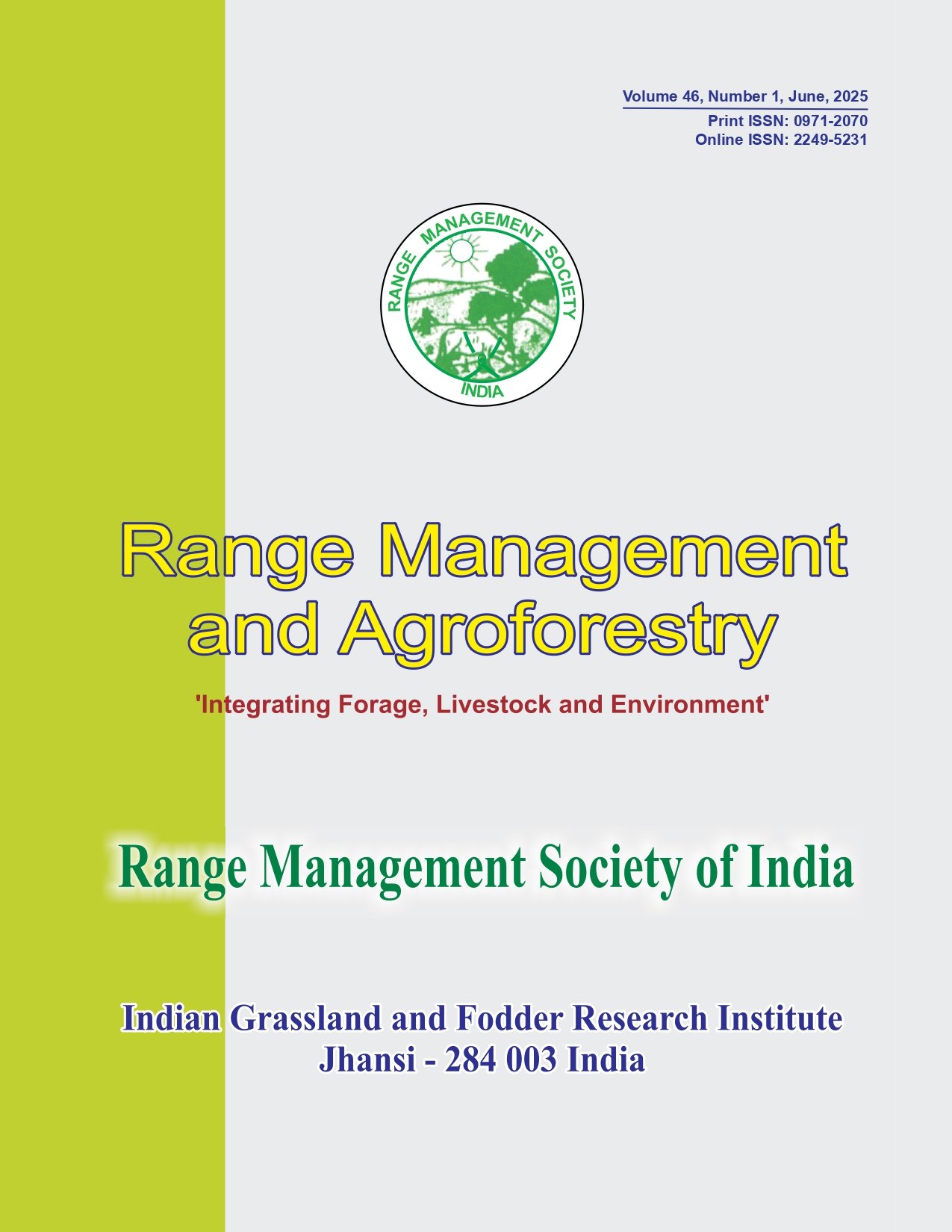Evaluation of livestock feed supply and demand in districts surrounding Bale Mountain National Park, Ethiopia: A strategy for biodiversity conservation
DOI:
https://doi.org/10.59515/rma.2025.v46.i1.04Keywords:
Dry-matter, Metabolizable energy, Digestible crude protein, Feed balance, Feed supply, and demandAbstract
The escalating human activities in and around Bale Mountain National Park (BMNP) present a considerable risk to the park’s biodiversity and ecological balance. The study evaluated the livestock feed balance and stability in the three districts —Adaba, Dinsho, and Goba, surrounding the BMNP in Ethiopia. A random sampling technique was employed to select the 263 households from the three districts. Data were collected by administering semi-structured interviews using a cross-sectional survey method and analyzed using SPSS version 20. Results displayed the annual feed supply and the amount required per household in terms of dry matter (DM = 23.69 ± 1.61 tonnes), metabolizable energy (ME = 207628.3 MJ/kg), and digestible crude protein (DCP = 1377.7 kg). The annual feed production in the study districts was limited to 41%, 60.65%, and 60.71% of the total required dry matter (DM), digestible crude protein (DCP), and metabolizable energy (ME) per household, respectively. The findings indicated that the total yields of dry matter, digestible crude protein, and metabolizable energy were adequate for only 6.3 months on average per district. It was suggested that effective strategies be implemented to support local communities in mitigating feed scarcities and enhancing land use for sustainable livestock production and biodiversity conservation in the study areas.
Downloads
Downloads
Published
How to Cite
Issue
Section
License
Copyright (c) 2025 Mohammed Mussa Abdulahi, Flintan Fiona, Ayana Angassa

This work is licensed under a Creative Commons Attribution-ShareAlike 4.0 International License.







